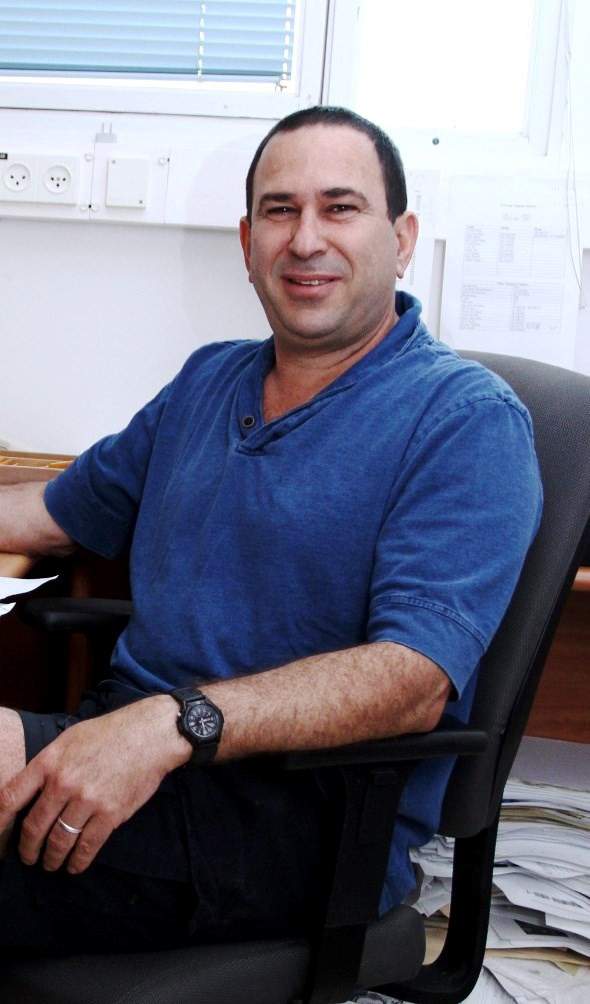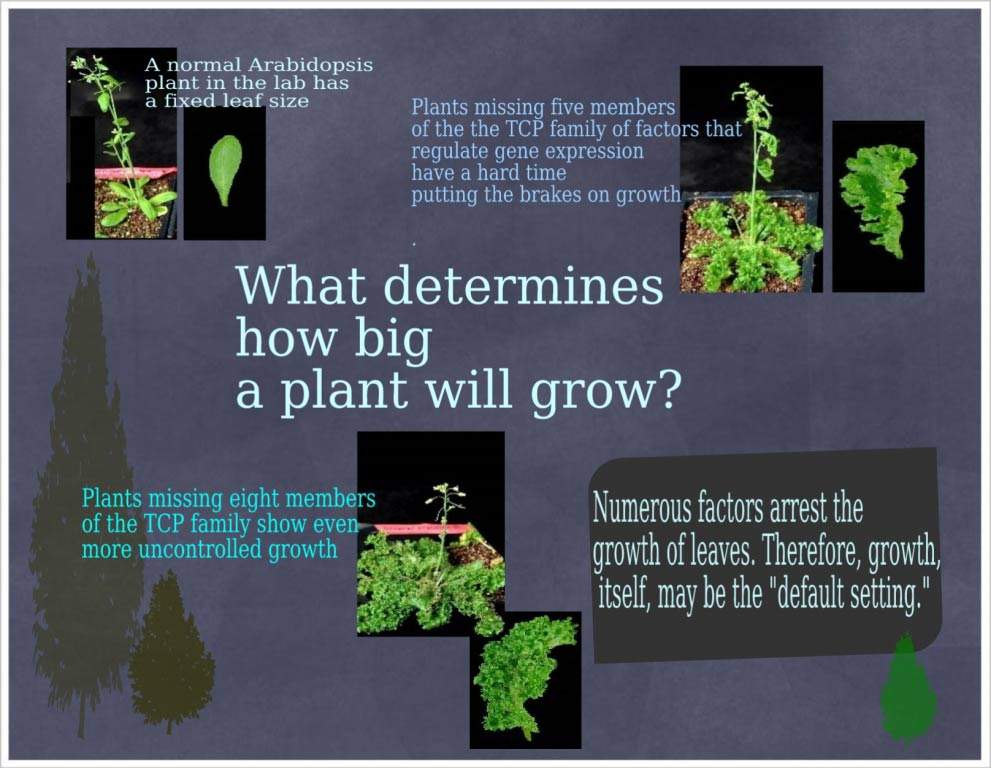
Elephants’ ears and those of humans may differ wildly in size, but nature provides each with a more-or-less fixed range and upper limit. Such evolutionary extremes are seen in the plant kingdom as well: Cabbage leaves, for instance, are ten times the size of those of a close relative, the inconspicuous mustard cress (Arabidopsis thaliana). What sets the ultimate size of an organ such as a leaf? Research in the lab of Prof. Yuval Eshed of the Plant Sciences Department has revealed a part of the answer, and the findings are something of a surprise: Most of the mechanisms involved in fixing leaf size are ones that put the brakes on growth, rather than ones for promoting growth.
These findings originated in previous research in Eshed’s lab. In the earlier study, the team was investigating a different question: What causes a leaf to begin growing? The onset of growth is not a preordained, automatic event. First the plant produces a leaf primordium, which, in order to grow, must undergo division into top and bottom sides. It is the interactions between the two sides of the primordium that initiate leaf growth. This type of interaction, interestingly enough, is also found in an unrelated two-dimensional organ – a developing fly wing.
In the research, which was conducted by then research students Drs. Idan Efroni and Eyal Blum, and which appeared in
The Plant Cell, the researchers wanted to understand the exact nature of this interaction. They used genetic engineering to create plants with leaves made up of a single cell type – either top or bottom – and compared them with normal plants.
The genetically engineered leaves did not grow; but the comparison enabled the scientists to discover dozens of proteins that were expressed in the normal plants but not in those with one-sided leaves. In further experiments, they looked for the functions of these proteins by creating a new series of genetically engineered plants, each producing a large quantity of one of the proteins. To their surprise, none of these proteins spurred leaf growth: Around half had no effect on leaf size, while the other half decreased it.
This finding seemed to throw a large bucket of cold water on their basic assumption that the majority of factors in a developing leaf would be pro-growth. To understand where they had gone wrong, the team focused on a group of proteins that were implicated in reducing leaf size, a family called TCP that regulates gene expression. Using a combination of genetic methods, the researchers created plants that did not produce any of the eight members of the TCP family. The result: a major improvement in leaf growth.
This finding led the scientists to the conclusion that the logic behind leaf growth is quite different from what they had originally thought. Growing appears to be the “default” setting for the leaf, so it does not require much prompting or regulation for it to happen; putting the brakes on growth, on the other hand, entails a number of different factors. This is necessary, in part, because it can take weeks or months for a leaf to grow and, during that time, any number of environmental factors can change. Lack of water or a rise in temperature, for example, can activate the brakes on growth. (That is why, in arid, subtropical regions like those of Israel, many wild plants sprout big leaves in the winter and small leaves in the summer.)
In a follow-up study that appeared in
Developmental Cell, Efroni and Eshed discovered how the orders to halt leaf growth are carried out. The scientists suspected that a plant hormone called cytokinin was involved. Cytokinin had previously been known to encourage cell division but hinder differentiation. The researchers sprayed the hormone on the leaves of plants that had been genetically engineered to produce a larger-than-normal amount of TCPs, and found that these leaves did not respond to the hormone and thus did not grow larger.
In other words, the TCPs reduced the sensitivity of the leaves to the growth-promoting hormone. How do they do this? In an experiment conducted together with a research group from Pennsylvania, Eshed and his team revealed the active mechanisms in detail. To carry out their duties, TCPs recruit the help of another protein – one that exposes certain areas of the genetic sequence so that the process of gene expression can begin. One gene that gets exposed in this way reduces the sensitivity of the plant to cytokinin; the TCP-protein partnership increases the expression of the gene. This system turns out to be quite flexible, enabling a range of leaf sizes within the proscribed limits. It can be activated at various stages in leaf development, so that the later the braking mechanism is deployed, the larger the leaf.
More than revealing a mechanism for regulating plant size, says Eshed, these studies have granted researchers a peek into the basic principles that guide development. They have shown that those principles can sometimes go against the instincts of even the most experienced scientific researchers.
Prof. Yuval Eshed is the incumbent of the Jacques Mimran Professorial Chair.


